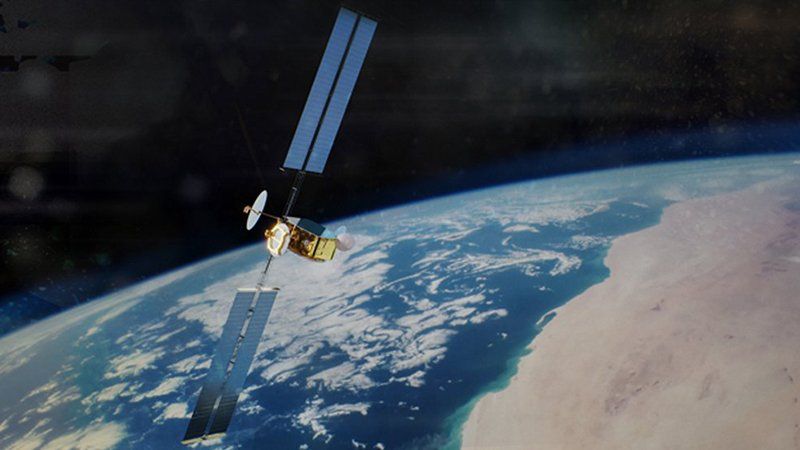So, how will OneSat satellites change the telecommunications market of the future?
Image Courtesy Airbus.
What is OneSat?
Previously, manufacturers would design satellites for specific missions and companies. They were launched, would serve their mission, and were then deactivated. While this made sense based on available technology and its limitations, it is a model that no longer serves our rapidly advancing world.
OneSat is a modular satellite that, once launched, can be reconfigured based on changing mission parameters. The satellite’s capacity, frequency, and coverage area are adjustable while still in orbit, providing far more flexibility than ever before.
The satellites will sit in geostationary orbit at 36,000km, allowing for reprogramming when necessary. As a general rule, OneSats will stick to the 15-year design lifespan that is common for telecoms satellites. However, the flexible technology means they might outlast this by many years.
Importantly, due to their design, OneSat satellites can enter the market up to 50 per cent quicker than current telecommunications satellites, and for less cost. Therefore, they provide an attractive solution for telecoms companies looking to save money and gain flexibility.
To achieve this, the satellites feature a range of disruptive technologies, including novel data processing and active antennas. Rather than building each satellite with a custom payload, OneSats get programmed for their specific mission, meaning they are much easier to adjust once in orbit.
In fact, several companies have already placed orders for OneSat satellites. These include Immarsat, Optus, Intelsat, and SKY Perfect JSAT Corporation. According to Airbus, the SKY Perfect order marks the first time a Japanese operator has purchased European satellites.
Future Plans for OneSat
We are still in the early stages of this technology, but it is already proving to be a game-changer. At the end of July 2021, the Eutelsat Quantum launched, marking the beginning of this new age. While not built specifically as part of the OneSat programme, Airbus was the lead manufacturer on the project, and much of its work fed into OneSat.
Reprogrammable satellites will likely be the future of telecommunications networks. Considering Airbus improved its market share from 25 per cent to 40 per cent in the space of a year, its OneSat network will only increase this figure.
The Eutelsat Quantum uses beam-hopping technology, which we will also see an increase in coming years. Combined with the ability to adjust missions on the fly, we will hopefully see an increase in the availability and flexibility of telecoms satellites.
Conclusion
Airbus’ OneSat has the power to revolutionise how we communicate. While this might sound hyperbolic, its ability to adjust on the fly means better use of resources, more flexible missions, and better longevity. Considering our current push for reusable technology on Earth, it makes sense to carry this logic into space.
Ready to start a conversation?
"*" indicates required fields
Ashwood House,
Woodlands,
Bradley Stoke,
Bristol, BS32 4QH
Building 307,
Aviation Park West,
Bournemouth Airport,
Dorset,
BH23 6NW


